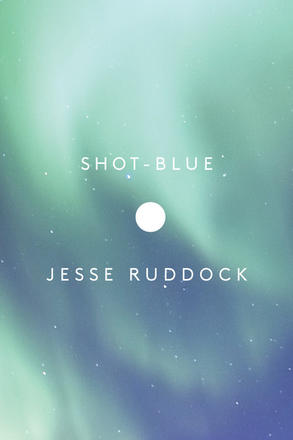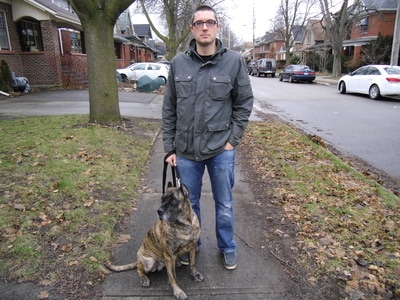 Shot-Blue Shot-Blue By Jesse Ruddock Coach House Books 2016 Jesse Ruddock’s powerful debut, Shot-Blue, is at once charged with lyrical energy and grounded in a complex, human understanding of trauma, desire and loss. Set in a northern landscape of lakes and forests filled with miners, loggers, vacationers, and the people who eke out a marginal existence at the edges of the tourism and resource extraction industries, the novel follows Tristan, the son of Rachel, a waitress and occasional prostitute, through the loss of his mother and a summer working at a resort on one of the lakes. Shot-Blue is divided into two sections. In the first, Rachel quits her job and retreats to her father’s cabin on an isolated island. Ruddock keeps a narrow focus on Rachel, Tristan, their relationship, and Rachel’s attempts to care for both of them. The section ends when Rachel, having moved closer to civilization for the winter, learns that she has never had title to her father’s island, and that it is being taken over by men who are building a resort; she wanders out into the winter, dying of exposure on the lake ice. In the second, substantially longer section, the novel opens out, including the staff and guests at the now-finished resort where Tristan lives and works. Although the cast of characters is larger, the second section shares the same concerns as the first, revisiting and expanding on the same themes, and using the same incandescent language. And it is Ruddock’s language that is perhaps the most striking feature of the novel. Ruddock has an eye for detail and a gift for metaphor. Take for example this description of the boarding house that Rachel and Tristan leave behind when they move to her father’s cabin: It was painted white a long time ago and now the paint shed in chunks like receipts. The place was famous for this: it was a miracle the siding wasn’t bare. If you lived there, flaking paint was part of your weather. It fell like snow when the wind had fingernails. On still days, it floated down like leaves and melted on the ground, forming pools of warm blue-silver. When tourists casting off the dock at the resort catch fish, they “rise to the surface throwing up wan, shredded, half-digested minnows, little pieces of flesh that [look] like [they’ve] been run through a washing machine.” Ruddock gives even mundane moments resonance and depth. This description of Tristan staring out over the lake in the late evening is rich with echoes of his relationship with his mother and that still raw loss: Tristan walked to his lookout on the far side of the island facing west, where the sunset would be most indelicate. But he was late, the sky had already bled colour like dried flowers. There wouldn’t be more sunset now, only a fading of light. He thought about watching it happen, but he felt such unrest he couldn’t stay. He looked across the mulled water and thought about climbing down and getting into it and going all the way out. But he would never do it. He didn’t want the deep water and didn’t care if it wanted him. He didn’t even want to remember what it felt like. It was her lair now. Ruddock’s adroit and revealing diction, such as the use of “indelicate” and “mulled” here, complements her eye for detail and her use of metaphor. Ruddock’s language is consistently, often unexpectedly, beautiful, but this is not a pretty book. Shot-Blue is set in an environment permeated and defined by violence, its menace, allure and traumatic consequences. Rachel has a facial scar: “It nicked her left temple then ran down her jaw, tent-covering a depression where a full, round cheek should have been.” Its origins are never explained, but it marks her out as a victim, and suggests a past that has left her as emotionally wounded as she is physically scared. The burning of Rachel’s father’s cabin by the men building the resort is a kind of violence, and is perceived as such by Tristan who vows to burn the whole island in revenge. In the second section of the novel, the boys who work at the resort play a game in which they take turns punching each other. Tristan himself invites violence, letting the other boys punch him without attempting to defend himself. Tristan’s desire to be beaten, to be disfigured, is also the desire to connect with his dead mother by becoming, like her, the object of violence, by inviting it to mark, transform and erase him. The novel mixes love and mourning together with self-annihilation in a complex amalgam that testifies to the centrality of violence to the lives of its characters. As part of this violence, bound up with it and happening alongside it, is the transformation of people, particularly women, into objects to be exploited. Rachel remembers prostituting herself as a teenager: Rachel would sell herself to a friend. She didn’t think of it as selling sex. They were not good friends, but he would pay her, and they went like that, having sex in his bedroom, even when his parents were home, for about a year until he got a girlfriend. Another time, it was one of her brother Sheridan’s friends, who’d heard about what she’d done. He asked her, said he liked her, he wouldn’t tell Sheridan, and he would pay. At fifteen, she had no other way to get money. She knew those boys, and she wasn’t afraid of herself. Friendship and sexual exploitation overlap, suggesting that even close relationships are defined by a casual brutality. This pattern is repeated when Rachel realizes she needs money to buy the few extra supplies she and her son need to survive on the island. She starts an affair with Keb, a man who ferries tourist around the lakes in his boat. Like her friendships, the affair has emotional content, but is defined by Keb paying her for sex. In the second section, Stella and Emiel, two guests at the resort, toy with Tomasin, a young girl working there for the summer. Their games are more refined than Rachel’s exploitation, but they still, at their core, involve the reduction of the girl to an object, to a plaything that can be manipulated, possessed and then discarded at the end of the summer. This pattern is not limited to female characters. When Rachel dies, Keb feels responsible for Tristan, and finds him work and a place to stay at the resort. This is at once an act of kindness—Keb has no duty to protect Tristan: he is not the boy’s father and he was only the mother’s john—and an example of this pattern of exploitation: Keb keeps all of Tristan’s pay, cutting his kindness with selfishness, effectively saving the boy by selling him into servitude. Although this pattern is not limited to female characters, it is primarily limited to them, and Tristan is a special case. He is the only male character to love, first, his mother, and, then, when she arrives at the resort, Tomasin, without participating in their exploitation, as human beings rather than objects. Through Tristan, Ruddock registers the collateral effects of trauma, exploring how it spreads out from its focal point along lines of emotional connection, wounding those attached to it along these lines as surely as those who experience it directly. From one perspective, Tristan, with his defensive interiority and his desire for self-annihilation, is the effect of damage done first to his mother and then to Tomasin. This understanding of trauma, its impact, legacy and capacity to transform even those it does not immediately touch, speaks to the novel’s penetrating emotional sensibility. On the back cover, Rivka Galchen praises it as “a genuinely wise novel,” and she is exactly right. This is not to say that the novel does not have its flaws. Although Ruddock’s supercharged writing makes for some of the Shot-Blue’s best moments, it is not always a strength. In the second section, the novel widens its scope, introducing a handful of new characters. Of these, only Emiel, one of the resort’s guests, is given a detailed background, and these characters’ relationships to each other and to the concerns of the novel take some time to develop. When not sufficiently grounded in character and plot, Ruddock’s metaphor-driven and imagery-laden language can sometimes fall flat. And the novel drags somewhat through this middle portion. But the second section does slowly begin to echo and expand on the themes of the first section, and it picks up momentum as it moves towards a closing handful of pages that gather together the threads of the narrative into a spectacularly written and wrenching finale that is well worth the reader’s patience. I began this review by saying that this novel is about trauma, desire and loss. This might suggest that Shot-Blue is a poetic meditation, that it is, like too many novels that are poetic and meditative, easy, even anodyne, but this is book is not that at all. Its beautiful language is bound up with violence. Its poetry is gritty. Its truths are difficult, uneasy. And, although it is not flawless, it will reward you with some genuinely great closing pages. AARON SCHNEIDER is a Senior Literary Editor at The Rusty Toque. His stories have appeared in the danforth review, Filling Station, and The Puritan.
Comments are closed.
|
Rusty ReviewsMonthly reviews of poetry and fiction. Archives
January 2017
Categories
All
|


 RSS Feed
RSS Feed
